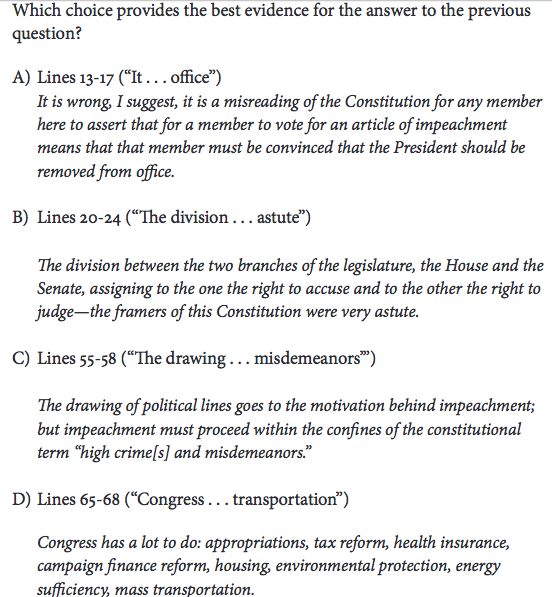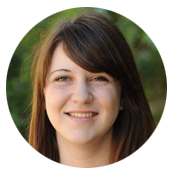
Before you start thinking about which colleges to apply to or what you want to study in college, you need to take the right steps to get there. For many students, this means taking the SAT.
You may be wondering when to start studying for the SAT. If you start too late, you won't get the highest score you're capable of. But if you start too early, you might struggle because you haven’t learned all the necessary content yet, plus you could forget things by the time the test rolls around.
When Should You Take the SAT?
Before you decide when to start studying for the SAT, first you need to figure out when you'll take the SAT. Given the content on the SAT and the college application timeline, you should aim to take your first SAT in the fall of junior year. This gives you time to retake the SAT in spring if you want a higher score. Then if you score well, senior year will be freed up for your college applications. Also, aiming for junior fall means your SAT studying won’t compete with AP or IB exams.
You'll have to decide between a more intense study schedule (like ten hours a week for two months) or a more gradual one (four hours a week for five months). Either method can work and help you make huge score increases, so choosing a plan will just depend on your schedule and study style.
When Should You Start Studying for the SAT?
Working backwards from junior fall, it’s good to start studying at some point during sophomore year for a longer, less intense plan or the summer after sophomore year for a more intense plan.
Taking the PSAT (Practice SAT) or PSAT 10 as a sophomore is a great way to get introduced to the test in a completely no-pressure situation – you aren’t qualified for the National Merit competition until junior year, so you can just get an introduction to the test and get a sense of where you stand with your current skills.
If your school doesn’t offer the PSAT or it's too late to sign up, you can also take a free SAT practice test online. Just remember to time yourself carefully to simulate actual test conditions!
By taking a practice SAT or a PSAT, you'll have a baseline score which you'll use to determine how many hours you need to study for the SAT further on in this article.
Where Do You Want to Go to College?
The length and intensity of your study plan will strongly depend on your college goals. If you’re looking to go a decent in-state school, there is less pressure riding on your score than if you are set on the likes of Harvard, Stanford, or MIT.
Use the three plans below to help you come up with your SAT target score.
Ivy League/Highly Selective School SAT Study Plan
If you’re aiming for highly selective colleges like the Ivy Leagues, Stanford, and MIT, getting a high SAT score is extremely important. Definitely plan to take the PSAT as a sophomore to see how you are shaping up to do on the SAT. You should consider taking a full SAT practice test as well, since the PSAT doesn’t include all of the content tested on the real SAT.

You'll need an excellent SAT score to get into MIT!
Once you have a starting score, decide whether you want to study during sophomore year at a more gradual pace or use the summer before junior year for a more intensive study schedule.
Keep in mind your target SAT score should be 1500 or higher if you are aiming for top schools. This puts you in the higher end of admitted student score ranges for these schools, and thus improves your odds of admission.
Next, take the SAT for the first time during junior fall. If you fall short of a 1500 (or whatever you set your target score at), plan to retake the SAT in junior spring and continue to study. (Learn more about why getting above 1500 is so important for top schools.)
Selective School SAT Study Plan
We are defining selective schools as schools that take less than half of admitted applicants (in other words, their admissions rate is below 50%). These schools are tough to get into, but not as competitive as the Ivy Leagues, Stanford, and MIT.
For selective schools, we also recommend either taking the PSAT as a sophomore to gauge your base score or taking a practice SAT.
Next, look up the SAT score ranges for your target colleges. You can find any college’s SAT score ranges by searching for “[Name of College/University] SAT scores PrepScholar”.
Set your target SAT score based on the most selective school you are applying to. This way, if you make your score goal, you can comfortably apply to every school on your list.
For example, if the most competitive school you’re applying to is New York University, you should set your SAT target score at 1350 – the average score of admitted students.
Take the SAT junior fall. If you are short of your goal, you can retake it in junior spring.
Less Selective School SAT Study Plan
Less selective schools are schools that admit more than half of their applicants. This is often the case with large public universities or lesser-known small colleges. Your SAT score here is important, but it likely won’t need to be sky high.
Take the PSAT as a sophomore to gauge your starting point. If you seriously struggle – get any score below a 1000 – start doing some prep sophomore year so you can get at least an above-average SAT score.
Otherwise, you can wait until after sophomore year is over and prep during the summer. Look up the SAT score ranges at your target schools and set your target score based on those ranges. For example, if you’re hoping to get into the University of Kentucky, you should set your target SAT score at 1130 for the new SAT, which is their average SAT score for admission.

Take the SAT junior fall. If your score is way lower than your state school’s ranges, you can retake the test in junior spring. Otherwise, focus on keeping your grades up and devoting time to your extracurriculars.
Ready to go beyond just reading about the SAT? Then you'll love the free five-day trial for our SAT Complete Prep program. Designed and written by PrepScholar SAT experts, our SAT program customizes to your skill level in over 40 subskills so that you can focus your studying on what will get you the biggest score gains.
Click on the button below to try it out!
How Much Do You Need to Study for the SAT?
How many hours you need to study for the SAT depends on how large a point improvement you want to make. You'll determine this by figuring out the difference between the baseline score you got from your practice test and your target score for the schools you want to get accepted to. You can use the following hours per point improvement recommendations as a starting point.
0-50 SAT Composite Point Improvement: 10 hours
50-100 Point Improvement: 20 hours
100-200 Point Improvement: 40 hours
200-300 Point Improvement: 80 hours
300-500 Point Improvement: 150 hours+
(For more on scoring, see our post on how the SAT is scored.)
As an example, if you get a 1200 on your practice test, and your target score is 1500, then you have 300 points to improve, meaning you should put in about 80 hours. You could space this out (say, three hours per week for six months) or study intensely over the summer (16 hours per week for five weeks).
This guideline is just a starting point and exactly how much time you'll need to spend studying heavily depends on how much you've prepped before, your starting skill level, and your ability to learn new concepts quickly.
If you're looking for a small improvement, like 50 points, you can do this by optimizing your testing strategy and possibly even just by retaking the test. But for serious improvements, 200 points and above, you likely still need to learn a lot of fundamental content. Little tricks and strategies won't be enough to raise your score - you will need to learn actual material and attack your test-taking weaknesses.
Think about it this way: the SAT tests academic skills that you've been learning your entire life, like how numbers work and how to read. As a high school junior, you've completed over 20,000 hours of schooling and homework. An improvement of 200 or more points requires a serious retooling of your knowledge and skills. If you can't devote at least 80 hours to prepping, you will find it very difficult to make huge score improvements.
What’s Tested on the SAT?
In this section we go over the major topics you'll be tested on in each of three main sections of the SAT. You can use this information to figure out what material you already know and what you still need to learn for the SAT.
Reading
All questions on the SAT Reading section are based on passages with set topics. There will be one US or world literature passage, two history/social science passages, and two science passages. You will need to be able to read and understand the passages and then answer multiple-choice questions about them. The literature passage can use especially complex language, so you have to be able to break down complex language in a short amount of time -- five passages (and 52 questions) in 65 minutes, to be precise.
The questions require you to define vocabulary based on context, use evidence, understand logical arguments, and even understand some basic scientific concepts. There are even a few questions about data analysis -- basically, you'll have to break down a graph or table. Finally, there are two-part "evidence support" questions: the first question asks you something about the passage, and the second question asks you where exactly in the passage you find your evidence. Check out this example to see what an evidence support question looks like:


Via College Board's Test Specifications for the Redesigned SAT.
Doing well on SAT Reading will require you to read difficult passages from different subjects quickly and break down their meaning. Essentially, the more advanced of a reader you are, and the more English, science, and social science classes you have taken, the better prepared you will be for this section.
Having two years of high school English completed by the time you take the test junior fall will give you a sufficient base to study with. High school English classes both broaden your vocabulary and teach you to approach increasingly difficult texts. In addition, social science or science classes you take will further prepare you to tackle the social science and science passages. Any advanced reading you can do outside of class – either in terms of books or magazines like The New Yorker or Wired – will also be helpful.
Read a detailed breakdown of the Reading section here.
Math
SAT Math tests the following math concepts:
- Numbers and Operations
- Algebra and Functions
- Geometry and Measurement
- Data Analysis, Statistics, and Probability
- Trigonometry
(You can read a full breakdown of how these concepts are tested here.)
This means that once you have taken Geometry and Algebra II, you will have learned all the content you need for the SAT Math section. You don’t need to worry about pre-calculus or calculus concepts on the SAT. However, SAT Math will require you to work through story problems and real-life scenarios, with some science and social science concepts thrown in as well. This is why extra studying for the SAT Math section is very important.
Definitely don’t attempt the SAT or a serious study regimen before you’ve completed geometry. But most students should be ready to tackle the SAT with the math they have learned before junior year. (If you want to read more about what it would be like to take the SAT without geometry, see our post on the subject.)
Writing and Language
The writing section of the SAT tests your ability to understand and apply grammar rules and English language conventions to both sentences and paragraphs. For this section, you will be asked to improve sentences (in terms of grammar and structure), identify errors in sentences (grammar and usage) and to improve paragraphs (organization and revision), all in the context of long passages. You can read a complete breakdown of this section here.
The more familiar you are with English grammar rules, the easier this section will be for you. Additionally, the more experience you have writing and revising, the easier it will be for you to tackle these questions quickly.
Again, two years of high school English should be sufficient preparation for most students, but reading and writing outside of class will help you get ahead. Also, you should definitely take the time to study the grammar rules that will be tested on SAT Writing.

The Bottom Line: When to Start Studying for the SAT
We recommend you take the PSAT (or an SAT practice test) sophomore year to get your base SAT score. Then, figure out your target SAT score based on the most competitive school you’re applying to. Finally, begin to study either during sophomore year or the following summer, and take the SAT junior fall.
The intensity of your studying will vary by how selective the schools you want to get into are, your starting score, and how much you need to improve. But if you start during sophomore year by taking the PSAT or an SAT practice test, you will be on track to get your best possible score during junior year. This will free up your senior year for college applications.
What’s Next?
Are you aiming for a perfect or close-to-perfect score? Get tips from our resident full-scorer about how to get there.
Learn what a good/bad/excellent SAT score is, and read about good scores for the Ivy League.
Curious about how the PSAT qualifies you for the National Merit Competition? Learn how to qualify here.
Want to improve your SAT score by 160 points? We have the industry's leading SAT prep program. Built by Harvard grads and SAT full scorers, the program learns your strengths and weaknesses through advanced statistics, then customizes your prep program to you so you get the most effective prep possible.
Check out our 5-day free trial today:
Have friends who also need help with test prep? Share this article!

Halle Edwards graduated from Stanford University with honors. In high school, she earned 99th percentile ACT scores as well as 99th percentile scores on SAT subject tests. She also took nine AP classes, earning a perfect score of 5 on seven AP tests. As a graduate of a large public high school who tackled the college admission process largely on her own, she is passionate about helping high school students from different backgrounds get the knowledge they need to be successful in the college admissions process.



































 Holly R.
Holly R.